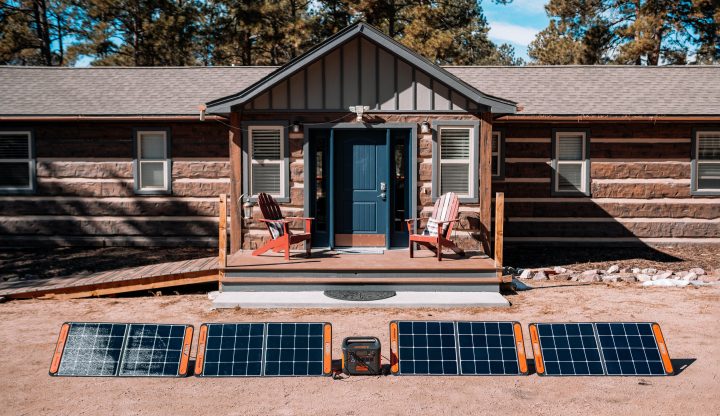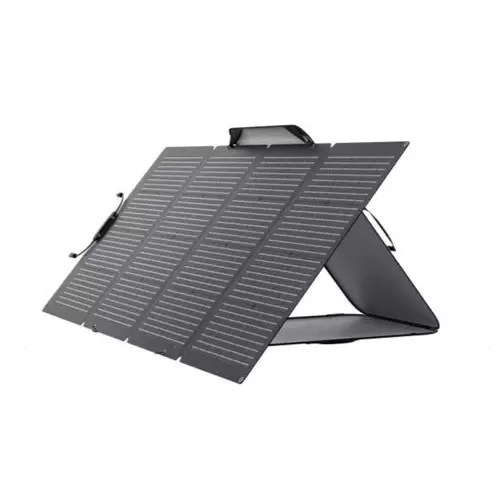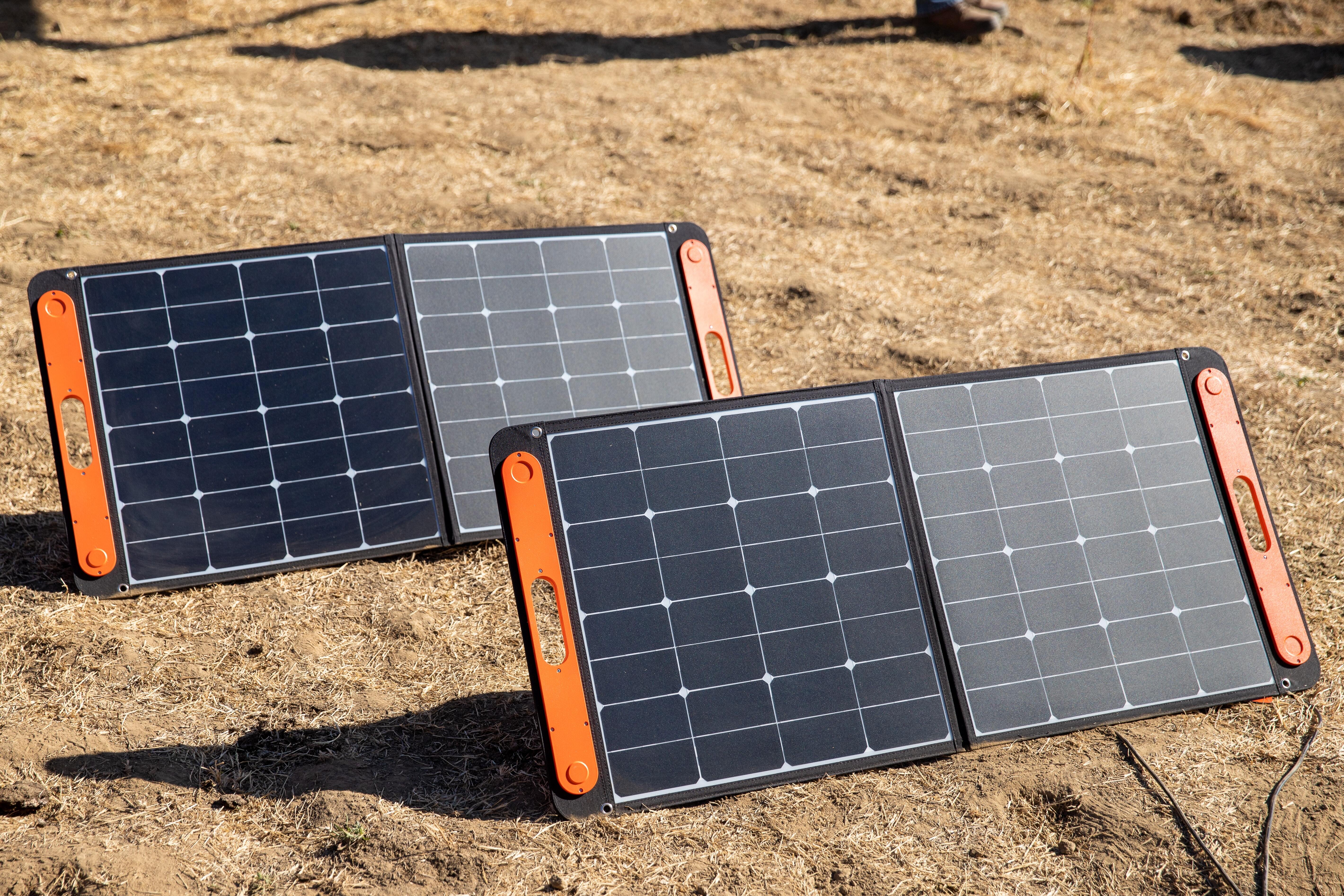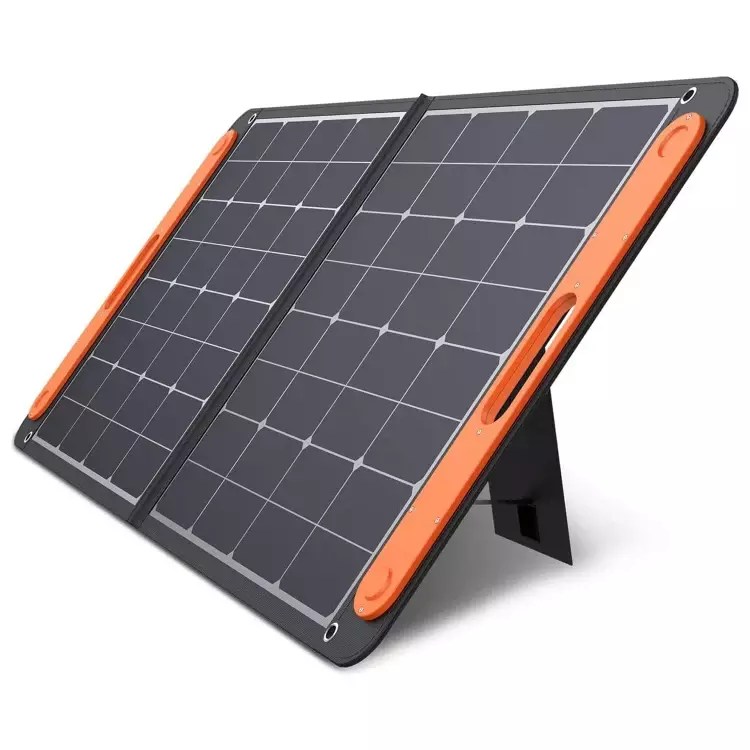GETTING YOUR BACKUP
There are affordable ways to use solar power to brighten up those load shedding days

While fully off-grid solar power may be out of reach for most of us, there are more affordable ways to incorporate portable short-term solar products, as well as long-term partial solar installations to protect parts of your home from the effects of rolling blackouts.
A complete solar system covering all of one’s needs might be the ideal solution when it comes to dealing with South Africa’s rolling blackouts.
However, with those costing north of R200,000 for an average family home to go either completely off-grid, or perhaps grid-tied but dependent on solar energy for up to 90% of electricity needs, it’s a solution that remains out of reach for most South Africans.
But with the range of options that are available, incorporating solar energy into one’s home needn’t be an “all-or-nothing” proposition.
Solar-charged UPS backup
Uninterrupted power supply (UPS) backup systems are already a popular option among many South Africans afflicted by load shedding.
Depending on use and size, these generally provide power for a couple of hours to longer, before needing recharging from the electricity grid. Many can also be recharged using solar energy.
For example, a popular UPS backup battery — the 518 watt-hour (Wh) Gizzu Power Station — which typically retails for around R8,000, also comes with the option to charge via solar energy. For another R4,200 or so, one can also buy a portable 90-watt solar panel with which to charge the battery.
Not only would this reduce the amount of electricity consumers buy from Eskom, but in the case of Stage 6 and Stage 8 load shedding, where there might not be a long enough charging interval between blackouts — or in areas that experience regular power outages in addition to load shedding — this provides another source of energy to charge the UPS.
Additionally, for consumers who enjoy camping and other outdoor activities where electricity supply might be limited, they would be able to travel with their UPS as well as a portable solar panel.
Similarly, other power stations — such as the slightly pricier Ecoflow River Pro at R12,000 for its 576Wh version, alongside the cheaper 288Wh version at R9,000 and the 720Wh model at R14,600 – also come with the option of buying a solar panel to charge the battery.
For the sake of clarity, neither this writer nor Daily Maverick is endorsing the Gizzu Power Station and the accompanying solar panel, as we have not tested it. The Gizzu, as well as other products mentioned, such as the Ecoflow and Jackery systems, are used strictly for illustrative purposes. We recommend shopping around to find the best possible deal for solar rechargeable UPS systems, as well as reading our article on UPS systems to work out the exact wattage that will suit your electricity needs.
Portable solar panel
“If you’re using a portable solar panel at home, perhaps on an apartment balcony, you just need to make sure that you’re able to place it somewhere where it can get at least four to five hours of direct sunlight,” says solar systems installer Kinesh Chetty, an energy consultant with a focus on solar (PV) energy systems, and a former director of the Maxx solar academy in Johannesburg.
In addition to ensuring that your portable solar panel gets enough sun, it is important to check its watt rating to get a sense of how long it might take to charge your battery, which will be affected by a number of factors.
For example, Gizzu’s 90-watt panel would be able to discharge a maximum of 90 watts per hour, while a panel with a higher rating would be able to discharge more watts and therefore charge faster.
The more premium brands such as Ecoflow and Jackery also offer a range of portable solar panels that, in addition to charging their UPS batteries, can also connect to one’s devices such as phones and tablets, enabling one to charge them directly from the solar panel.
Jackery’s portable 100-watt solar panel, which sells for R7,000 at a local retailer, can power two USB devices simultaneously, directly from the solar panel without the need for a UPS battery. It also claims to fully charge Jackery’s 500-watt UPS in eight hours, or four hours for the 250-watt UPS battery, “depending on direct sunlight and perfect conditions”.
All in all, depending on needs and brand, consumers can get an effective and fully portable solar power backup solution that lasts a few hours for between R10,000 and R20,000.
What is also important to remember is that the UPS backup can still be recharged using Eskom power if one prefers not to invest in a solar panel.

Ecoflow 220W Solar Panel. Image: Supplied

Jackery power station. Image: Unsplash

Jackery power station. Image: Unsplash
The entry-level inverter, battery and solar panel solution
These portable solar-powered UPS systems can also cost well above the aforementioned prices, the more powerful and fully featured they are.
For example, Ecoflow’s Delta Max, which is rated for 2016Wh, currently retails for between R40,000 and R42,000, and if consumers would prefer to use solar panels to recharge it, they can do so using up to two of Ecoflow’s 400-watt solar panels, which sell for R20,200 each, bringing the entire setup to just over R80,000.
However, at that price, consumers can look at installing permanent small-scale solutions that power a number of appliances and lights. Importantly, these would include professional installation of solar panels, an inverter and battery, rather than a DIY solution.
“If your budget only allows you to get something off the shelf, then sure, get products like the Jackery system or an equivalent… but I would say that once you have about R50,000, you can make the transition from a product to a turnkey engineered solution,” says Chetty, noting that in such a case, “small-scale solar, when designed correctly, is affordable, and it can do what you want it to do, but the design brief is super critical”.
Tempting as it may be to seek out a standard solution, he explains that for the same price, customers may need a completely different design. For example, he has had clients who need a solution that primarily covers just their home-office items such as Wi-Fi, computers, printers and lights, and others who own restaurants and who need to power multiple fridges as well as their computers and routers.
Depending on the wattage of each, an installer would work out how many panels you need, what kind of inverter you need, and what size battery you need for it to be effective.
Importantly, he recommends that customers avoid going to buy the parts themselves before they have spoken to an installer, as well as avoid buying lead batteries, but rather opt for the more reliable lithium batteries.
With regard to the more high-powered and premium solar rechargeable UPS systems, Chetty says “you can go and buy a Jackery and you can put your refrigerator and your lights on it, but as it is not a fully integrated system that is wired into your distribution board… it is not a long-term solution for what the future of South Africa holds for the next few years in terms of energy security.
“At that R50,000 price, I would definitely recommend investing in a small-scale solar power system that is compliant in terms of installation, has the best materials and that can last for at least 10 years.” DM/ML


















 Become an Insider
Become an Insider
Good post Malibongwe, especially the advice to avoid lead batteries. Also, small inverters cannot always start a refrigerator compressor so readers should take advice on that.
Thanks , a few options .
Have seen the Jackery in use on a narrowboat in England . Works well.
I saw the writing on the wall years ago , when break even was 10 -15 years .
Now about 7-8 .
I bit the bullet , bought 12 450 w panels and one battery , now added another battery and inverter .
In for R110k maybe another R20k for complete system .
Am busy getting battery / inverter set up sorted to cover the load shedding . Until I can get all my panels up and connected .
While having a battery back up is nice , one will still be paying ESCOM to charge them . 🙁
While the article author cannot recommend the EcoFlow River Pro – I definitely do. It keeps my fridge running over multiple 4 hour power gaps when in Stage 6. It is also very portable so I can move it to the entertainment room and includes 12v and USB charging plugs. I have also charged it up from a small 20W solar panel – but I never managed to get it to go above 30% in one day due to using such a small panel. The fan will spin up intermittently when not on mains – so I do not keep it near where I sleep. It was expensive – but it feel it was worth it. I’m done wasting money on lead acid batteries.
Thank u for this article